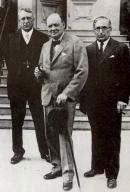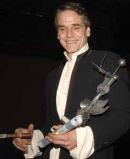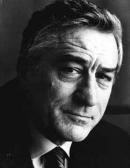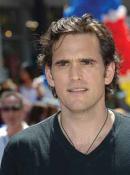Habanos on the Big Screen
Even before talkies came on the big screen, tobacco was a common companion for some of the biggest celebrities. With the okay of both screenwriters and directors, cinema has recreated the life of musicians, gunmen, authors, presidents, mobsters, poets, tycoons or thugs who found in Habanos their closest daily ally in their moments of meditation or just used it to blow loneliness and big-time disappointments away.
It’s well known that many actors who never turned to Habanos in an effort to avoid falling back on its billows of smoke as a source of relaxation before entering a scene, or just because cigars were part of the character they were about to play, did cling to its aroma and taste, eventually bringing the habit into their own lifestyles. In many films, screenwriters and directors saw in tobacco the complementary lead role and put cigars – better yet, Habanos – in countless scenes and punch lines as very active performers. Genial actor Charles Chaplin – who didn’t have to resort to handmade cigars to know what to do in a scene – flaunted his roots before the cameras with one of those gems in his hand more than once. He became one of the first stars to do that, though the hand-rolled leaves were never a part of his most celebrated character ever: Charlot, the captivating goodhearted bum. Groucho Marx made a broader impact as a Habano smoker, to such an extent that in the 1940 movie “Go West”, starred by the Marx Brothers, it was hard to tell the smoke wafting out of the gunfire from the one coming out of his mouth. But the magic of tobacco as a quasi-built-in element in actors – rather than the peculiarities of the characters they used to perform – picked up steam in the kindhearted nature of Edward G. Robinson, a short chubby guy with an evil face who was always blessed by the Hollywood angels. Quite contradictory and very much in line with the real and paradoxical peculiarity of the made-in-California filmmaking industry, as a general rule Robinson’s characters always oozed out hatred, animosity and criminal instincts, evils the actor used to wrap up in gift paper to portray a devilish and charming character that eventually managed to dominate the entire set. While turning a cigar with his left hand and holding a lighter in the right one – to make it burn evenly – he used to look askance, with his face lightly tilted to one side, at his own foes. And it seemed as if his thoughts flew in complete revelation in each and every smoke ring coming out of his angry face’s big mouth. Rubbing elbows with Humphrey Bogart, who drops lisping lines to Lauren Bacall – his wife in real life – while letting a burning cigarette dangle from the corner of his mouth, in the 1948 film “Key Largo”, a shorter Edward G. Robinson, with his Habano in tow and clearly in spite of his dramaturgical evilness and pathologic fear of hurricanes, stood tall as the legit master of that flick. Another celebrity who always held a hand-rolled cigar in a bid to put far more moxie into his works of excellence, was American producer, film director and actor Orson Welles. Extremely fat and tired of the bitterness for the historic moment required for the plot, his lips seem to cry out for a Habano, an indispensable yet unfeasible addition for his portrayal of French King Louis XVIII in the 1970 film “Waterloo”. In it, he refers to Marshall Michel Ney with this line: “These military people… in an iron cage. Who could have possibly asked for such thing?” Welles would have been the right actor to portray Sir Winston Churchill if someone would have made up his mind to make a movie on the larger-than-life former British Prime Minister. Both men were potbellied, wide-faced guys with curved, frowned eyebrows, hard faces and eagle eyes who also shared their liking for Habanos. However, what Waterloo and the character of Louis XVIII banned him from finally came in an unshackled fashion in 1941’s “Citizen Kane”, penciled in as one of the greatest motion pictures of all time by experts and critics. As the film’s co-writer, director and lead role actor portraying a U.S. mass media czar inspired in the person of William Randolph Hearst, Welles was said to have gone through some hard times after lunging into the powerful press tycoon, a man who acted as a hands-on firebrand in instigating what eventually turned out to be the U.S. Army’s intervention in the war between Cubans and Spaniards on the island nation. Jean Paul Belmond, the charismatic ugly face of French cinema, an idol for both kids and grownups back in the 1960s and 70s, whose action-packed movies teeming with acrobatic moves and humor-sprinkled crazy things – no stuntmen were allowed at that time, so he could perfectly go in for skull fractures of all kinds – came on the big screen with a laughter of his own, let alone a way of speaking and doing his stuff, but always with a Habano trapped between his teeth. Evasive, calculating and as untouched as a rock, featuring a coldhearted look and squeezing a cigar stub between his unexpressive lips, Clint Eastwood is just another movie star who has showed up in his movies with a hand-rolled gem. By the hand of Sergio Leone, he’s remembered for the portrayal of a hit man who is hired to weed out a band of wrongdoers in “For a Few Dollars More”, in which he mulls over ploys and schemes with a cigar in his mouth. With a vast production under his belt, Alfred Hitchcock – an indispensable name when it comes to thrillers – was a staunch consumer of Habanos. He was recognized for making fleeting appearances in his own movies, always playing fleetingly a puzzling and speechless character in each and every one of them. Two of his most celebrated films – Psycho and Vertigo – made more than one woman cry in horror in movie theaters, especially when watching Kim Novak fall from atop a tower before the unmoved eyes of James Stewart, or just when Anthony Perkins, dressed as a woman and wielding a slaughterman’s knife in his hand, stabs Janet Leigh in the shower. In the shooting of his flicks, Hitchcock used to put on a broad smile on his face while blowing rings of smoke from his accompanying Habano. He did exactly the same during those abovementioned short-lived appearances in his own pictures. In a gripping historic portrayal on the life of Argentina-born guerrilla fighter Ernesto Che Guevara, Puerto Rican actor and director Binisio del Toro unveils for the audience a multitude of aspects related to the legendary revolutionary, including his passion for Habanos. In similarly biographic films about Charles Dickens and Honoré de Balzac, Eduard Monet or Pablo Picasso, the bundle of hand-rolled leaves – a product undisputedly hailing from Cuba – has been depicted as a faithful companion and source of inspiration in moments of leisure. Francis Ford Coppola, Steven Spielberg, Robert De Niro, Jack Nicholson, Robert Duval, Pierce Brosnan, Sean Penn, Gerard Depardieu, Matt Dillon, Seymour Cassel, Joe Pantoliano, Jeremy Irons – recipient of the Habano Award in the Communication category – Bill Zane (Titanic), Joseph Finney (Shakespeare in Love), are some of the must-mention names on a much longer list of movie celebs who both on and off the big screen have owned up their passion for Habanos. The First International Habano in Images Contest – a premiere for this 14th Habano Festival – and the beautiful film Cigars: The Heart and Soul of Cuba, by James Suckling y James Orr – the showing of this movie for delegates attending the festival is slated for Friday Feb. 2 at the Havana Intl. Conference Center – wink gleefully at this amazing expression of man’s creativeness in which Cuba, through this emblematic product called Habano, has played a major role in this important linkage the world has to offer.
Orson Welles would have been the right actor to portray Sir Winston Churchill if someone would have made up his mind to make a movie on the larger-than-life former British Prime Minister. Both men were potbellied, wide-faced guys who also shared a liking for Habanos.








































